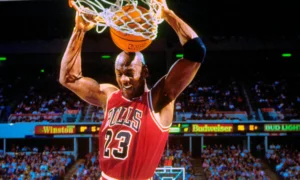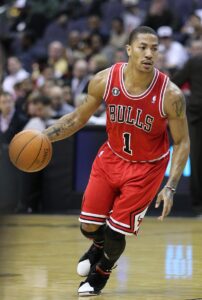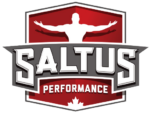BY MASON TAN, BKIN, FMS
INTRODUCTION
Before going into the topic of youth strength training, let’s have a look at NBA players from different eras who had 2 completely different career outcomes.
1. NBA hall of famer, Michael Jordan entered the league without prior experiences in the weight room. After being pushed around by the physical Detroit Pistons he wanted to get stronger and decided to turn to Tim Grover for his expert help. A 30 day trial soon turned to years of training and a successful hall of fame career.

2. Derrick Rose who is an astounding guard in today’s league started off his career flawlessly with a Rookie of the Year award in 2008-2009 followed by the league MVP award in 2010-2011. However due to the NBA lockout that year, the regular season was shortened and the injuries never ended for Rose. Starting from his toe, to lower back, groin, ankle, ACL, and upon return from his ACL injury, his meniscus issues prevented him from being his MVP self. ESPN’s Sports Science, John Brenkus, found that cuts like Roses’ puts about “3x the body weight on an ankle”. Clearly the muscles surrounding Roses’ lower limbs are not able to help distribute the force he generates through a joint.

Although many scientific articles have proven the benefits of strength training* for youths, there still remains the stigma within the culture of Canadian athletics that strength training is harmful for youth athletes. According to the data gathered by the national electronic injury surveillance system (NEISS) of the US consumer product safety commissions, strength training for youth is considered to be high risk for injury. Additionally, common concerns raised in society such as a potential fracture to the growth plate (epiphyseal plate) can cause problems such as growth stunts and limb deformity. However, studies have also shown that force placed on joints by sport-specific activities such as basketball, soccer, and football, were greater in magnitude than strength training, thus leading to more chronic injuries overtime.
Also, with technology being more accessible and popular, current and future youth generation will be spending most of their free time either watching TV, or playing video games instead of performing any sort of physical activity. Not only will this lead to several if not many future postural issues from sitting, but it also causes movement patterns to be rather inefficient. Thus, the purpose of this article will be to provide evidence conducted by researchers around the world, in hopes to show that strength training is not only beneficial to youths but also to the Canadian sport culture as we continue to develop higher class athletes.
*Note: The term Strength Training was used because it encompasses a variety of ways to improve strength, not just by lifting weights.
POSITIVE BENEFITS OF YOUTH STRENGTH TRAINING
Increase bone density through modelling and remodelling of bones
– Studies have shown that Junior Olympic weight lifters and gymnasts as young as 7 years old have a higher bone mineral density, meaning lower likelihood of fractures and breaks due to slipping and falling.
– Additionally, due to the opportunity for the body to model and remodel bones to adapt to high mechanical forces, youth strength training can also aid in future injury prevention mechanisms.
Maintain power performance throughout the season
– A study done by Mario et al. (2011), has also shown that athletes in season will most likely be confronted with a decrease in performance power. This is due to the decreased demands during the course of a season in comparison to the offseason program.
– Most athletes train in the offseason for performance gains (high energy demand), but fail to keep up the workload during the season (relatively lower energy demand), ultimately leading to a decrease in power production.
Solution: With the help of a proper year-round training program, athletes will be able to maintain power performance at its highest.
Sport performance benefits
– Multiple studies have shown significant improvements in long jump, vertical jump, and sprint/agility time following a youth strength program.
– Youth strength training program build what is called Functional Hypertrophy, where hypertrophy refers to muscle growth and functional means practical. What is the point of big pectorals (chest muscles) if they restrict movement during play?
Injury prevention
– According to the American College of Sports Medicine (ACSM), approximately 50% of chronic overuse injuries are preventable through the use of proper fundamental skill development as oppose to sport-specific training.
– Sport-specific training has been shown to produce a ton of chronic injuries as the structures (joints, ligaments, tendons, muscles, etc.) are not strong enough to support the constant forces that are going through them.
– Joint instability and mechanics (knocked-kneed, collapsed arch, etc.) also play a huge role in chronic injuries as they increase the amount of stress through the structures supporting the joint.
– Proper jumping and landing mechanics -> not allowing the knees to touch each other when you land (knee valgus).
CONCLUSION
Some general rules as outlined by Alan Stein, Director of Puresweat Basketball, and the lead performance trainer for the Nike Basketball Skills Academies, in his article for youth strength training are:
– Safe -> proper form and appropriate resistance (if applicable)
– Fun -> training should never be a chore, it has to be fun and engaging
– Fundamental -> establish general movement skills (running, jumping, etc.) before sport specific skills (ball-handling, shooting, etc.)
– Challenging -> always challenge youths with new movements, exercises and drills as they adapt extremely quick
By adding a youth strength program to Canadian sport programs, not only will there be health-related benefits for the future, but youth will also gain injury prevention mechanisms, maintain and improve physical performance and develop fundamental skills as opposed to the high risk of sport-specific training. It is also important to keep in mind that all research done on the topic of youth strength training was completed under high coach-athlete ratios. Would you want your athletic career to be “like mike” or blossom like a rose and fade with the wind over time?
For you are looking to a get your child active during the winter months, then see our indoor high-performance training sessions.
